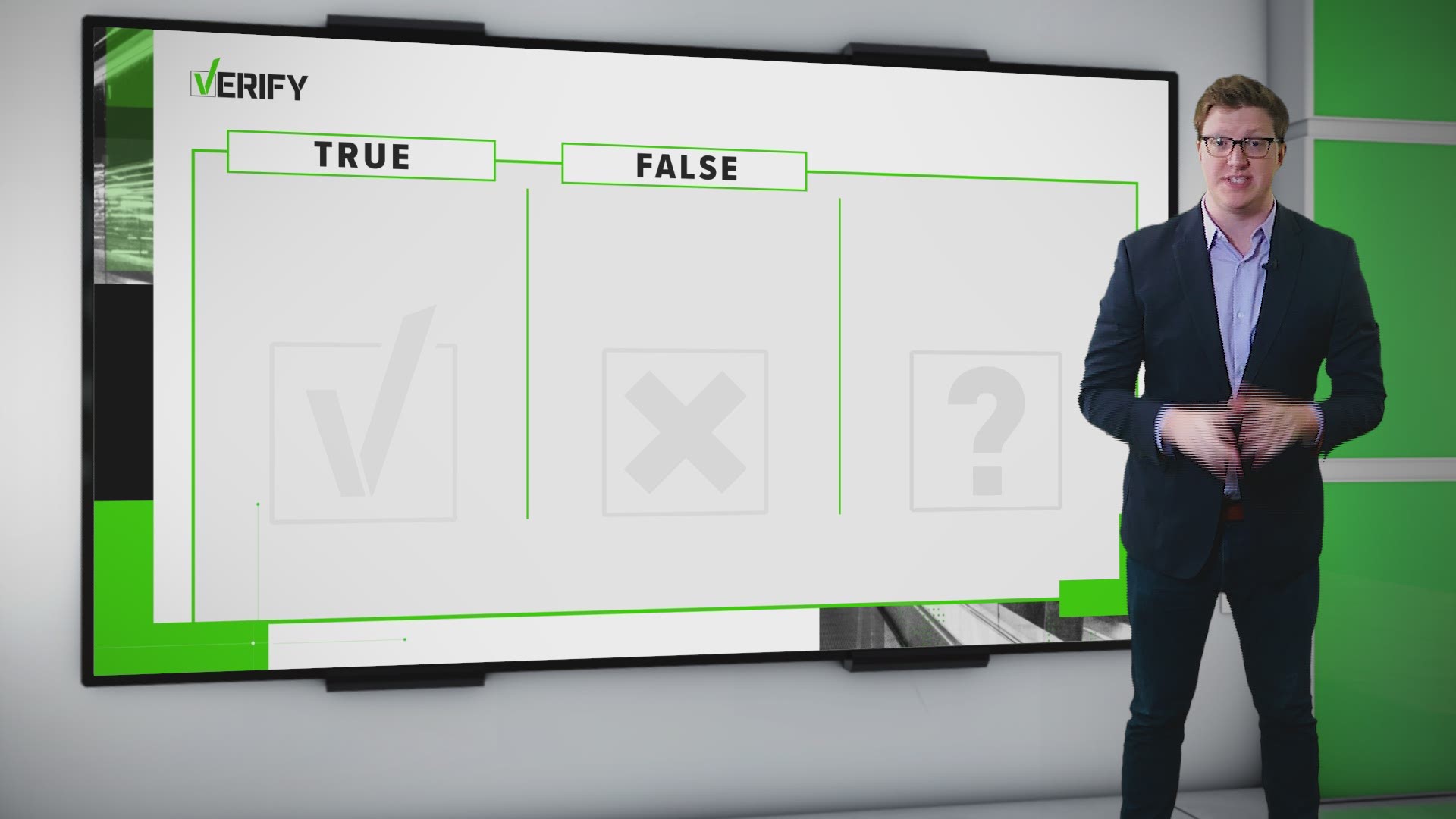For days, people across the nation have marched to protest the killing of George Floyd, a black man who died after a Minneapolis police officer held his knee on Floyd’s neck.
Police forces have responded to these protests with tear gas and other anti-riot measures. Protesters have posted countless photos and videos to social media showing police firing the chemical gas during the demonstrations.
The most common types of chemicals used in these agents today are chloroacetophenone and 2-chlorobenzalmalononitrile, according to the CDC. Usually, these chemical compounds cause a burning sensation in the eyes, nose and on the skin. Long-lasting exposure or large doses could cause blindness, respiratory failure or death, the CDC says.
Some posts claim tear gas is illegal to use in warfare - so why can police use it against civilians?
So the VERIFY team researched the rules behind tear gas.
THE QUESTION
Is the usage of tear gas a war crime?
THE ANSWER
Yes.
But law enforcement can still legally use it for riot control purposes. In fact, the same agreement that banned and criminalized tear gas in warfare also specifically allowed for its use by law enforcement.
WHAT WE FOUND
The general use of “asphyxiating, poisonous or other gases” was prohibited by the Geneva Protocol of 1925, shortly after WWI. The text of the protocol was short and did not specify beyond that what gases were banned.
The United States Senate, according to the State Department, did not ratify the treaty at the time. In fact, the United States continued to use tear gas and chemical herbicides in the Vietnam War, arguing that such chemicals were not covered by the Geneva Protocol. But other countries, especially those in the Soviet bloc, argued that the use of tear gas was prohibited by the Geneva Protocol.
A Swedish ambassador at the time argued there was a “danger of escalation if nonlethal chemical agents were permitted” but also “pointed out that the military use of tear gases should be distinguished from their use for riot control,” the State Department says.
A broader interpretation of the Geneva Protocol was then adopted and the United States eventually ratified it -- with a few riot-control exceptions -- in 1975.
In 1992, the United Nations held a convention on chemical weapons called the Convention on the Prohibition of the Development, Production, Stockpiling and Use of Chemical Weapons and on Their Destruction.
During this meeting, the organization developed a second treaty that was similar to the first, but more explicit in its guidance. The updated agreement prohibited members from using "riot control agents as a method of warfare."
That convention explicitly defined “riot control” gases as chemicals "which can produce rapidly in humans sensory irritation or disabling physical effects which disappear within a short time following termination of exposure," to avoid the debate that occurred following the Geneva Protocol.
But the issue provoked debate among member states. Jamil Dakwar, a representative from the ACLU, said in an interview with PRI said there was pressure to ban chemical weapons in the leadup to the Chemical Weapons Convention. He said many countries argued they would resort to more lethal methods to control their own citizens if law enforcement could not use these chemicals.
So as a compromise, the agreement again allowed an exception for the use of these chemicals for “domestic riot control purposes.”
Our expert also explained some of the risks involved when using these chemicals during wartime.
Richard Price, a political science professor at the University of British Columbia and the author of The Chemical Weapons Taboo, told VERIFY in an email that “soldiers don’t have the luxury of determining if gasses shot at them are tear gases or much more lethal chemical weapons like chlorine, mustard or what have you."
He said any gases on the frontlines could expose a country to false accusations of using illegal chemicals. Such claims could escalate the conflict further.
"The best thing to avoid potentially false accusations of prohibited lethal chemical use (that then spirals to more general use in retaliation) was to just ban them all in the context of battle.”
He also explained that the Chemical Weapons Convention decided on the term "riot control" gases rather than “non-lethal” gases because “they can kill, if in sufficient dosage and concentration, such as in a confined area, but that is very rare since they are usually used outdoors, but that’s one reason why the CWC doesn’t differentiate these as lethal/non-lethal gases, but rather define according to the purpose (riot control).”
BOTTOM LINE
Yes, tear gas is banned for use in war. However, the same international provisions that ban it also allow law enforcement to use it domestically.
It’s also incorrect to say tear gas is non-lethal. It can be lethal in confined areas, which is one reason it’s banned in war. It’s very rarely lethal when used outdoors.
Though many countries use these chemicals for riot control purposes, their use remains controversial.

